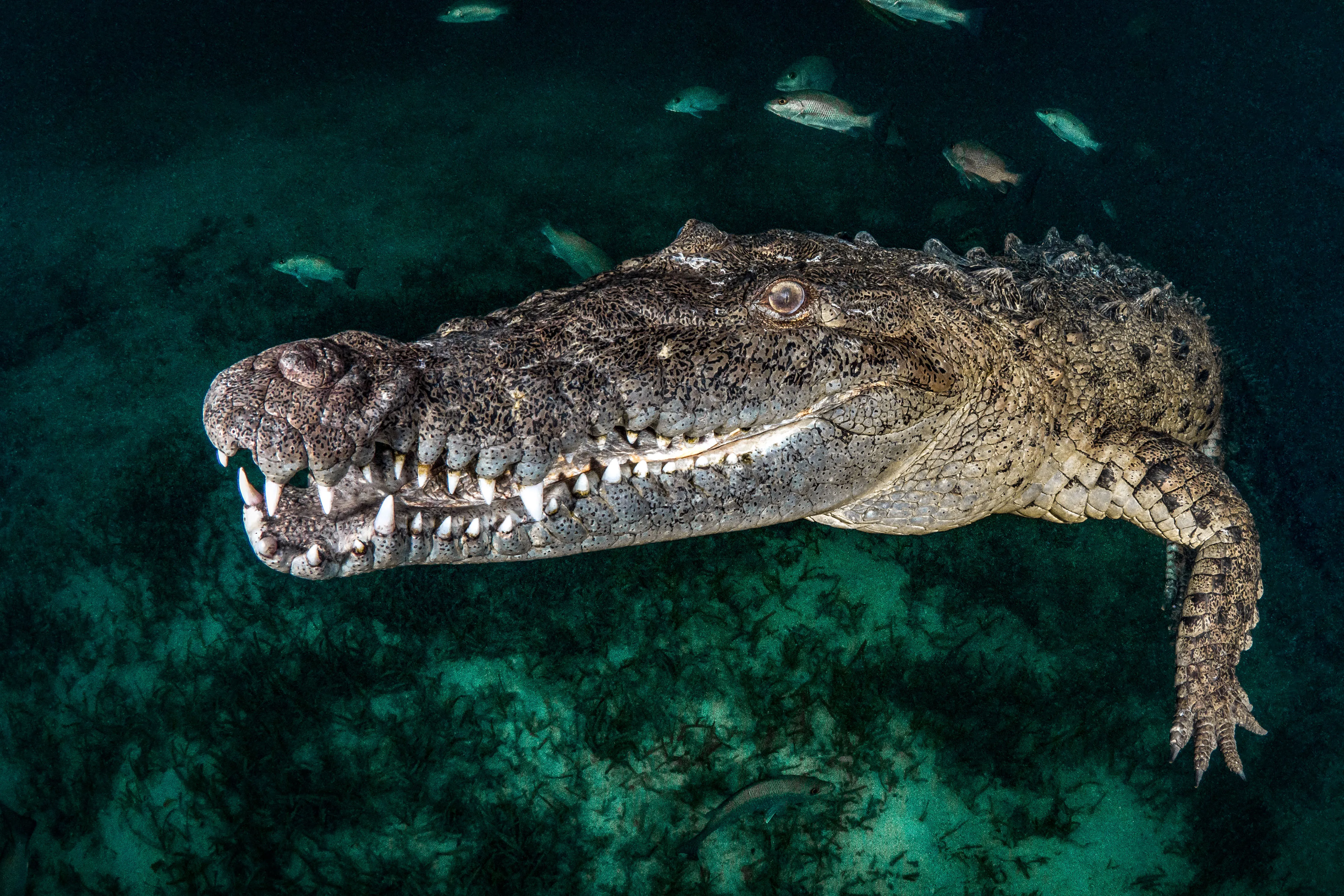I was at Gardens of the Queen, Cuba for a week, and for three of those days I had the opportunity to spend time in the water photographing American crocodiles (Crocodylus acutus). Gardens of the Queen is an archipelago 60 miles off the coast of Cuba, and it has been a marine protected area since 1996. There is a healthy population of American crocodiles there and I wanted to capture images of the crocodiles in this pristine environment.

I really wanted to capture an extreme close-up image of a crocodile showing all of the intricate patterns in its skin, especially since there are not many close-up images of crocodiles taken from in the water. I also wanted to show the connection between the crocodile and myself as the photographer. You can see the crocodile is looking right at me. Yet there is no aggression. This is an intelligent animal that is keenly aware of its surroundings, and it has chosen to allow me into its world for this brief period of time. I took this image on the last day I was there, by which point I had spent quite a bit of time in the water with the crocodiles and felt comfortable going for an extreme close up shot. I wanted to do a split shot showing not only the crocodile in the water but its home, the mangroves, as well. I let the crocodile swim toward me as I remained very still so as not to startle it, keeping my camera steady half in and half out of the water. The crocodile watched me as it brushed up against my camera, and then slowly swam away.

When most people see this image, they will most likely have an immediate reaction of trepidation and fear seeing a crocodile this close, especially with those sharp white teeth. And I think this is natural, since our brains are wired to fear certain animals and situations. But then I hope viewers can look beyond that and begin to see this truly beautiful animal in its natural habitat, and appreciate how millions of years of evolution have perfected the crocodile to become the marvelous predator that it is serving a critical role at the top of the food chain. When many people think of mangroves, often they only envision the greenery and vegetation of the mangrove itself, not realizing that mangroves are home to entire ecosystems from apex predators such as this crocodile, all the way down the food chain to the tiniest organisms. So hopefully seeing this image of the crocodile with the lush healthy mangroves in the background will bring to the forefront of the viewer’s mind that there are so many animals that depend on mangroves throughout their lives, which is why protecting these areas is so critical.

